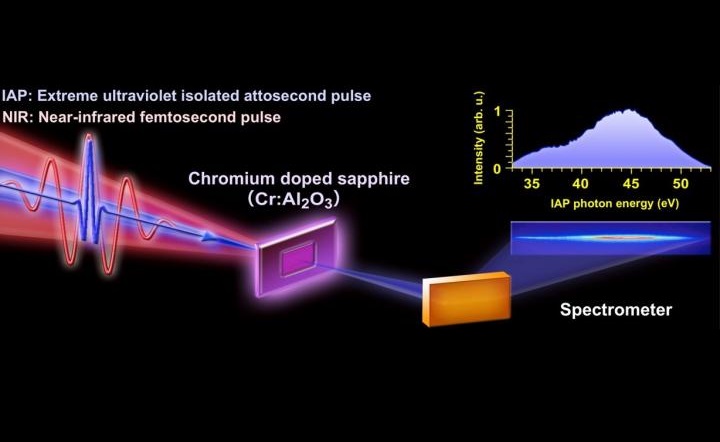18-APR-2018
Yokohama, Japan - Collaborative research team of Prof. Jun Takeda and Associate Prof. Ikufumi Katayama in the laboratory of Yokohama National University (YNU) and Nippon Telegraph and Telephone (NTT) successfully observed petahertz (PHz: 1015of a hertz) electron oscillation. The periodic electron oscillations of 667-383 attoseconds (as: 10-18 of a second) is the fastest that has ever been measured in the direct time-dependent spectroscopy in solid-state material.
As high-speed shutter cameras capture motions of fast-moving objects, researchers generally use laser (pulse) like instantaneous strobe light in order to observe the ultrafast motion of an electron underlying a physical phenomenon. The shorter the pulse duration, the faster the electron oscillation can be observed. The frequency of the lightwave-field in the visible and ultraviolet region can reach the petahertz (PHz: 1015 of a hertz), which means that the oscillation periodicity can achieve attosecond (as: 10-18 of a second) duration.
In previous studies, NTT researchers of the team generated an isolated attosecond pulse (IAP) [H. Mashiko et al., Nature commun. 5, 5599 (2014)] and monitored the electron oscillation with 1.2-PHz frequency using gallium-nitride (GaN) semiconductor [H. Mashiko et al., Nature Phys. 5, 741 (2016)]. The next challenges are the observation of faster electron oscillation in the chromium doped sapphire (Cr:Al2O3) insulator and the characterization of the ultrafast electron dephasing.
The paper, published in the journal Nature communications reports a successful observation of the near-infrared (NIR) pulse-induced multiple electronic dipole oscillations (periodicities of 667-383 as) in the Cr:Al2O3 solid-state material. The measurement is realized by the extreme short IAP (192-as duration) and the use of stable pump (NIR pulse) and probe (IAP) system (timing jitter of ~23 as). The characterized electron oscillations are the fastest that has ever been measured in the direct time-dependent spectroscopy. In addition, the individual dephasing times in the Cr donor-like intermediate level and the Al2O3 CB state are revealed.
Dr. Hiroki Mashiko, a NTT scientist of the team, said, "We contrived the robust pump-probe system with an extremely short isolated attosecond pulse, which led to the observation of the fastest electron oscillation in solid-state material in recorded history. The benefits of this study are directly related to the control of various optical phenomena through the dielectric polarization, and the results will help the development of future electronic and photonic devices."
###
The paper "Multi-petahertz electron interference in Cr:Al2O3 solid-state material" is available online from 18 April 2018 Nature communications, with doi: 10.1038/s41467-018-03885-7
Yokohama National University (YNU or Yokokoku) is a Japanese national university founded in 1949. YNU provides students with a practical education utilizing the wide expertise of its faculty and facilitates engagement with the global community. YNU's strength in the academic research of practical application sciences leads to high-impact publications and contributes to international scientific research and the global society. For more information, please see: http://www.ynu.ac.jp/english/
RELATED JOURNAL ARTICLE















